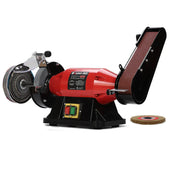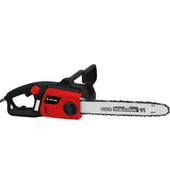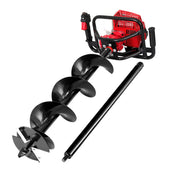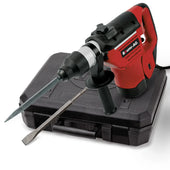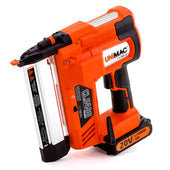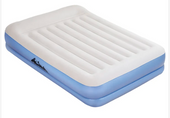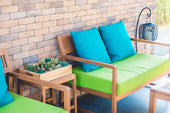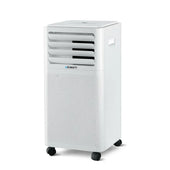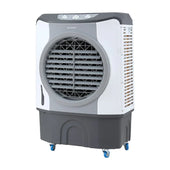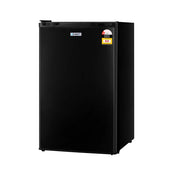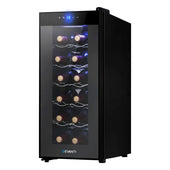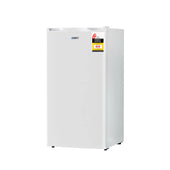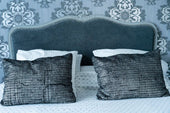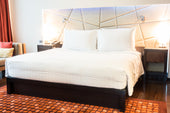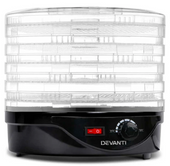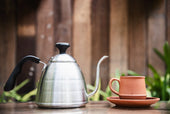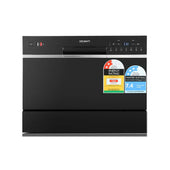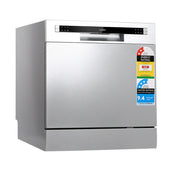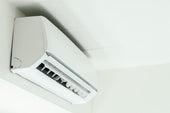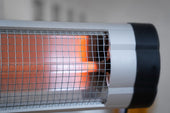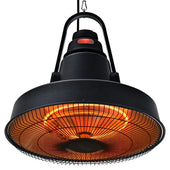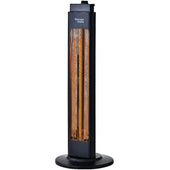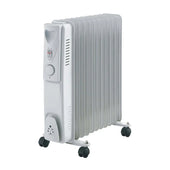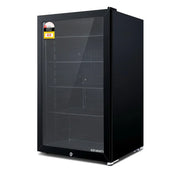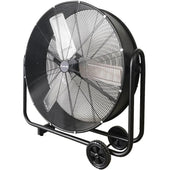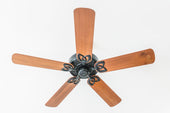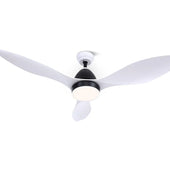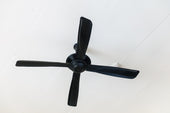Understand Your Bookshelf Space
Assessing the available bookshelf space is a crucial step in organising a collection effectively. Begin by evaluating the dimensions of the existing shelves. Measure the height, depth, and width of each shelf to understand the amount of storage available. This helps determine the arrangement of books and avoids cramming or overloading. Shelves with adjustable heights offer greater flexibility for storing books of different sizes.
Consider the structural support of the bookshelf, as some may not withstand the weight of large hardbacks or a dense arrangement of paperbacks. Heavy books are typically better placed on lower shelves to ensure stability and even distribution of weight. Understanding the physical limitations as noted by During Days, can prevent damage to both the bookshelf and the books.
Think about the intended functionality of the bookshelf. Is it exclusively meant for books, or will there be space for decorative items such as bookends, plants, or framed pictures? Allocating specific zones for these purposes allows better organisation and aesthetic balance. If incorporating items besides books, leave enough space for airflow and easy access.
Take stock of the book collection to gauge how much shelf space is required. Categorise the books by their heights, depths, or other organising preferences to estimate the arrangement and compatibility with the shelf dimensions. Kids Book Shelf are more suited to paperbacks or smaller books, whereas deeper shelves accommodate larger tomes.
For those with limited shelving, consider creative storage solutions. Stack books horizontally or use the top of the bookshelf for extra storage. Thinking creatively about the space ensures efficient use without looking cluttered. Understand the capabilities and limitations of the Corner Book Shelf to optimise its use effectively.
Declutter and Assess Your Collection
The process of organising a bookshelf begins with decluttering and assessing the books you own. Start by removing all the books from the shelves and placing them on a clean surface, such as a table or the floor. This step allows for a fresh look at the collection and provides an opportunity to evaluate each item systematically.
Assess each book individually to determine whether it still aligns with your current interests, needs, or space constraints. Ask critical questions such as:
- Have I read this book or do I plan to read it?
- Does this book hold sentimental or practical value for me?
- Will I genuinely use or refer to it again in the future?
Separate the books into distinct categories as you go through them:
- Keep: Books you cherish, regularly use, or plan to read.
- Donate or Sell: Titles you no longer need but may benefit others.
- Recycle or Discard: Damaged or outdated books that cannot be reused.
Aim to be honest when deciding what to keep. Taking photos of sentimental titles or noting their significance can help part with books that occupy unnecessary space. For larger collections, consider setting limits on how many books you wish to retain, factoring in the space available on the shelves.
Once decluttered, organise the “Keep” pile into smaller groups based on criteria such as topic, genre, or author, to streamline the subsequent organisation phase. Use temporary markers like sticky notes to identify those groups, if necessary.
By decluttering and assessing thoroughly, the process aids in simplifying the task ahead, helping to lay the groundwork for an orderly and functional bookshelf arrangement.
Sort Books by Categories
Organising a bookshelf by categorisation is an effective way to streamline browsing and enhance accessibility. Sorting books by categories encourages a more systematic arrangement, making it easier to locate specific titles. Whether the furniture collection is vast or modest, categorising ensures that each book finds its rightful place based on its genre, theme, or type.
Categories to Consider
There is a diverse array of categories available, depending on personal preference or content variations in the collection. Some common categories include:
- Fiction and Non-Fiction: Separating stories from factual works can be particularly helpful for readers who enjoy alternating between narrative-driven content and informative material.
- Genres: Fiction books can be further sorted into genres like romance, science fiction, mystery, or fantasy, while non-fiction might be grouped by areas such as biography, history, self-help, or travel.
- Authors: Grouping books by author creates a cohesive way to indulge in a favourite writer’s works. This is especially useful for fans of prolific authors or series.
- Subjects: This method works well for educational or professional collections. Organising books based on subject matter—for instance, science, arts, economics, or technology—simplifies academic pursuits.
- Formats: Hardcovers, paperbacks, or audiobooks may be grouped separately for distinct engagement styles.
Sub-categorisation for Better Clarity
Within each primary category, sub-categorisation further refines organisation. For example, in the fiction genre, books can be grouped chronologically or alphabetically for sequencing convenience. Similarly, under subject categories, books can be divided by difficulty level, such as beginner, intermediate, or advanced.
Multi-category Sorting
A blend of categories can sometimes prove beneficial. For example, sorting books first by genre and then by author ensures organised complexities are handled effectively without confusion. This approach balances categorisation efficiency and personal customisation.
By employing thoughtful categorisation, a bookshelf can transform into a visually appealing and functional space for literature.
Experiment with Size and Colour Arrangements
Organising a bookshelf goes beyond mere order—it can serve as an opportunity to create visual appeal. Experimenting with size and colour arrangements is one effective way to enhance the aesthetics of a bookshelf while maintaining functionality. By arranging books methodically according to size or coordinating colours, the shelf can become a focal point in the room.
Size-based organisation involves grouping books based on their dimensions. Start by separating large books like coffee table editions, art collections, or oversized hardbacks, and positioning them either together in one section or as anchors at the ends of the shelf. Smaller books, such as paperbacks, novellas, or pocket guides, can be grouped in clusters for a uniform look. Mixing sizes temporarily for a staggered, cascading effect also works beautifully, adding dynamism and a sense of rhythm to the bookshelf. Ensure that heavier or larger books are placed on lower shelves to prevent sagging and maintain stability.
Colour-coordinated arrangement creates a striking visual impact. Books can be grouped by similar hues, such as placing all blues or yellows together. For a more intricate display, consider arranging books in a gradient or rainbow spectrum, transitioning smoothly between colours like red to orange, orange to yellow, and so forth. Alternatively, mixing contrasting colours can result in bold visual statements. White Book Shelf and Black Book Shelf combinations can balance and complement brighter colour groups in the same space.
Another creative idea is blending both size and colour approaches. For example, large hardbacks in cool colours can be positioned on one side of the shelf, while smaller paperbacks in warm tones occupy another section. Experimentation is key, as balancing size and colour arrangements may vary depending on each person’s available collection and preferences.
Beyond aesthetics, these arrangements make it easier to locate books quickly. Such techniques can transform the bookshelf into both a utilitarian storage area and an artistic design piece, enhancing the ambience of any space. Taking time to explore different arrangements allows for customisation to suit individual taste.
Prioritise Frequently Used Books
When organising a bookshelf, giving priority to frequently used books can greatly enhance accessibility and efficiency. Books that are used regularly, such as reference volumes, textbooks, or favourite novels, should be placed in positions that are easy to reach. This ensures minimal effort when retrieving them.
Here are some practical tips for prioritising frequently used books on a bookshelf:
- Eye-Level Placement: Arrange frequently used books at eye level if the bookshelf’s height allows. This position makes them the easiest to find and grab, reducing the need to bend or stretch.
- Front and Centre: Keep these books at the front or centrally located on shelves. Avoid placing them behind other items, as this creates unnecessary hurdles and clutter.
- Dividing Sections: Dedicate specific sections or shelves exclusively for books consulted regularly. Grouping them together reduces the need to search across various parts of the shelf.
- Vertical Organisation: Consider organising frequently used books vertically to save space. Tall shelves are ideal for utilising this arrangement while keeping everything visible.
- Alternatives for Tall or Low Bookshelves: For bookshelves that are particularly tall or low, use the middle portion for active books. Reserve the topmost and lower sections for less essential volumes.
Having a clear organisational approach boosts efficiency and supports consistent use. In settings such as libraries or workspaces, placing frequently accessed material in central locations can be immensely practical.
Additionally, thoughtful prioritisation is beneficial for multiple people sharing a bookshelf. Books that cater to communal tasks or hobbies should take precedence over personal collections in shared spaces. For better visual appeal, creating deliberate groupings within this category will balance function and aesthetics.
This strategy allows for a more tailored and proactive organising system, empowering readers to focus on their favourite reads or critical titles effortlessly.
Utilise Vertical Space and Stack Wisely
A well-organised bookshelf benefits greatly from efficient utilisation of vertical space. By considering height and stacking techniques, one can maximise storage while maintaining a visually appealing arrangement. Shelves provide ample room for creativity, enabling individuals to display their books in a way that is both functional and beautiful.
Using Vertical Space
Shelves of varying heights offer flexibility, making it possible to store books of different sizes. Taller books can be positioned upright to save space, while smaller books might fit horizontally in groups. Adjustable shelving adds another dimension of practicality; it allows for customisation based on the sizes of items being stored. Consider placing extra shelving inserts to double the storage space if the gaps are too tall but unused. Don’t forget that the uppermost shelf, often overlooked, represents valuable space for larger or less frequently accessed books, especially in an Oak Book Shelf.
Stacking Techniques
Stacking books horizontally is not only functional but can also serve an aesthetic purpose. Horizontal stacks can be integrated with vertical rows to create visual interest. When stacking horizontally, it’s crucial to ensure stability by placing heavier or larger books at the bottom of the stack to prevent tipping. For those working with deep shelves, the incorporation of double rows—a front row and a hidden row at the back—can make full use of available space, though frequent access may require organisation aids, such as shelf risers.
Considerations for Mixed Items
Bookshelves often accommodate more than just books. Vertical space can be utilised by introducing decorative storage boxes or holders for smaller items like stationery, letting you group possessions logically. A Wooden Book Shelf with tall shelving spaces can display artwork or framed photos alongside books to break up the visual monotony.
By blending vertical usage and stacking principles, an organiser can maximise storage, improve aesthetics, and reduce clutter.



